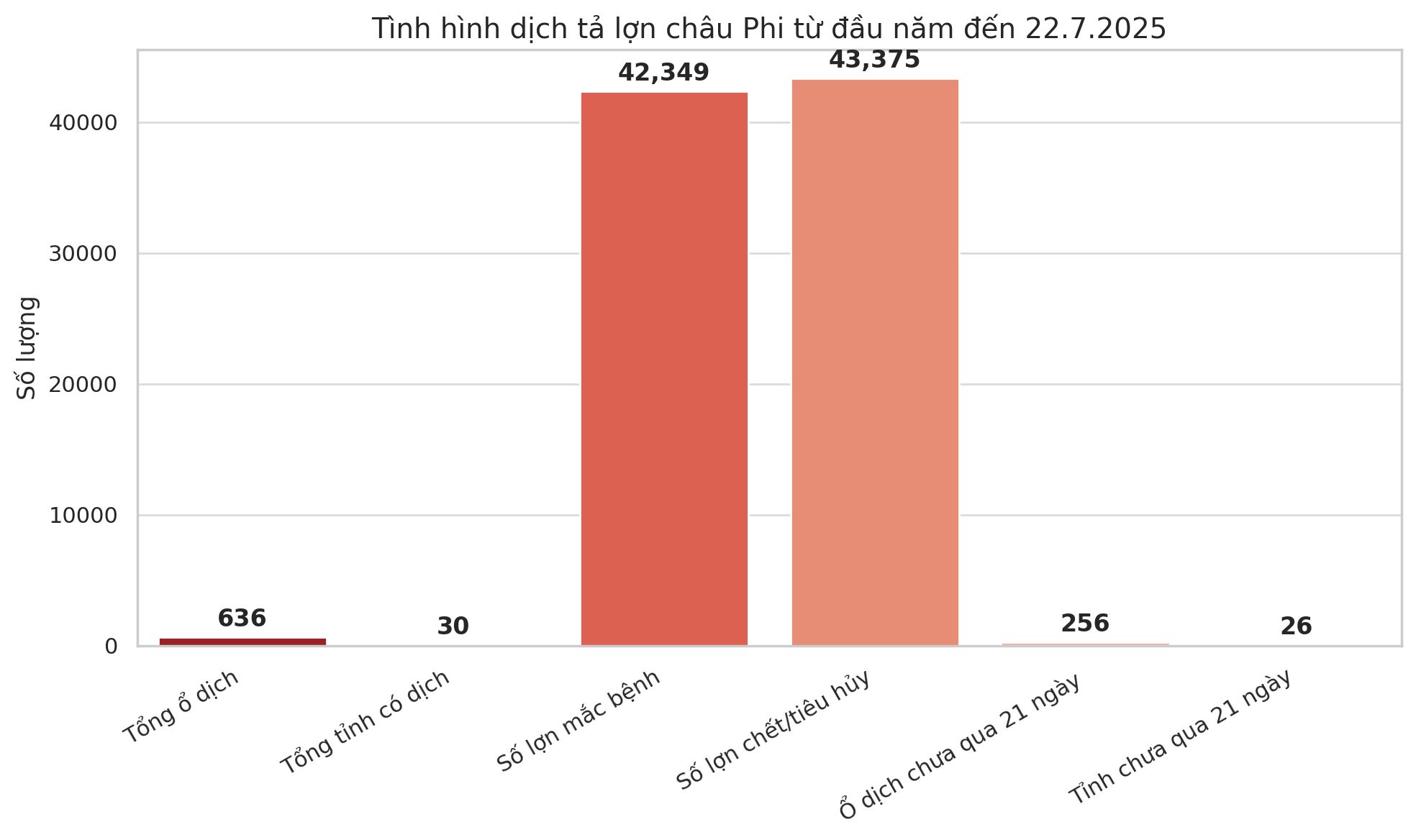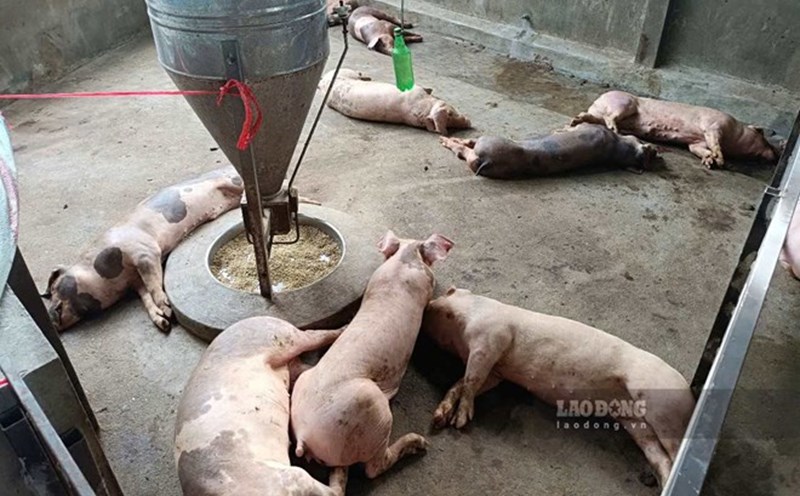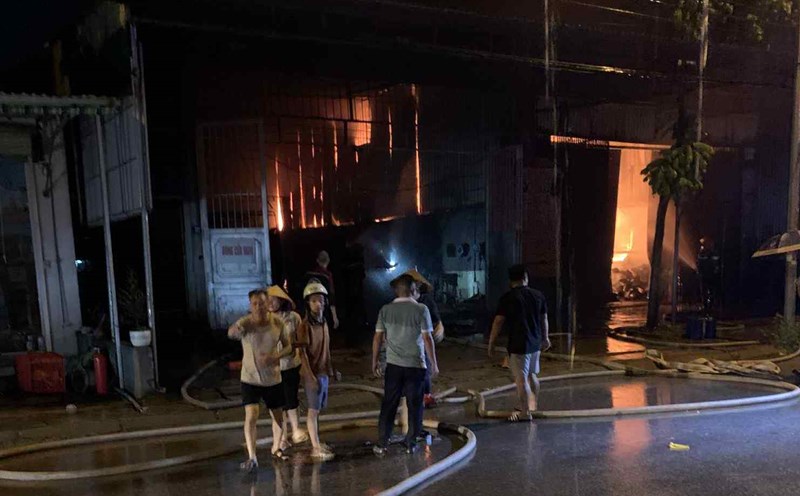Increased risk of African swine fever spread after storms
In Con Cuong commune, Nghe An province, the area has just experienced a major flood, many people are living in a state of anxiety. Although there has not been a major outbreak, according to feedback from the grassroots, neighboring communes have begun to see the phenomenon of pigs dying of unknown cause, suspected to be caused by African swine fever infection.
Ms. Nguyen Phuong (Con Cuong commune, Nghe An) said that her family is currently raising 20 pigs, and the recent flooded area of her house was fortunately not flooded. However, after the flood, the water level in ponds, rivers and streams in the area and neighboring communes rose, many barns were flooded and damp.
Worried about the risk of the virus causing African swine fever spreading with the water, Ms. Phuong's family has proactively taken epidemic prevention measures: "Recently, in neighboring communes, there have also been cases of pig deaths of unknown cause, suspected to be due to African swine fever, so the family has proactively cleaned and disinfected the barn area regularly, limited strangers from entering and leaving, and provided food with adequate nutrients to improve the resistance of the flock".
According to Mr. Dang Van Minh, Head of Nghe An Animal Husbandry and Veterinary Department, the current situation of African swine fever in the whole country and Nghe An province in particular is very complicated. In Nghe An, there are still outbreaks that have not passed 21 days. The whole province has more than 1 million pigs, of which about 65% are raised in small-scale form, making it difficult to control the epidemic. After a long period of storms, humid weather became an ideal condition for the swine fever virus to spread through water and the environment, causing a risk of widespread cross-infection.
"The biggest difficulty at present is the lack of veterinary forces at the commune level, the new government does not have much experience in handling epidemics. In addition, the treatment work at the facility has not been implemented synchronously and drastically, so there are still shortcomings from handling outbreaks, controlling transportation, informing and propagating to people to understand that no dead pigs must be sent into the environment, no epidemics must be hidden, and when discovered, they must immediately report to the authorities," said Mr. Minh.
Need to promote vaccination and slaughter control
According to statistics from the Department of Animal Husbandry and Veterinary Medicine (Ministry of Agriculture and Environment), the whole country currently has 24,858 small-scale animal slaughterhouses, of which 18,102 (accounting for 73%) do not have business registration certificates and are not allowed to operate by local authorities. Mr. Phan Quang Minh, Deputy Director of the Department of Animal Husbandry and Veterinary Medicine, said that the current regulations on slaughter control and animal quarantine are relatively complete, however, the application of quarantine work at small-scale slaughterhouses still faces many difficulties.
In the coming time, Mr. Phan Quang Minh also suggested that provincial and commune authorities at all levels need to strengthen measures to manage small-scale facilities, not to continue the situation of some facilities violating veterinary laws, still collecting and slaughtering sick, suspected diseases or littering pigs.
Virus still exists in animal populations and the environment, especially in transitional weather conditions, natural disasters and floods can cause pathogens to spread through water. Therefore, livestock farmers need to clean and disinfect the barn to destroy pathogens before re-herding," the Deputy Director of the Department of Animal Husbandry and Veterinary Medicine stated.
Meanwhile, Deputy Minister of Agriculture and Environment Phung Duc Tien emphasized that epidemic prevention, environmental sanitation, and focusing on seed and food sources need to be further promoted by the locality. The Deputy Minister also affirmed that the African swine fever vaccine is still a "steel shield" with high protection efficiency, which needs to be popularized and widely deployed to farmers, with vaccination of over 80% to ensure community immunity.
Currently, nearly half of the pigs are infected with the recombined genotype I-II virus - a type of vaccine that is not yet effective. In that situation, the Ministry of Agriculture and Environment has directed units to soon conduct research to develop an effective vaccine.
The Deputy Minister also emphasized that synchronous direction in localities is a decisive factor in the vaccination rate, ensuring disease control and ensuring growth for the livestock industry in general.

In June and July 2025, DTLCP epidemics will increase in the northern provinces (Cao Bang, Lang Son, Tuyen Quang, Hanoi...) and the central coast (Quang Ngai, Quang Tri...).











